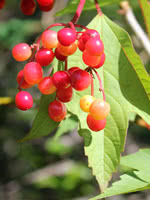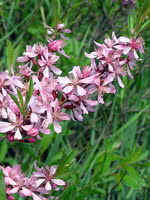Mon-Fri 9am - 5pm Mountain time
Highbush Cranberry vs Russian Almond
Viburnum opulus var. americanum (trilobum)
Prunus tenella
Highbush Cranberry produces attractive white flowers in late June and bears edible fruit that matures to a bright red colour in the late summer.
This shrub, native to much of Canada, is fast growing, and its fruit can be eaten raw or cooked into a sauce.
Russian Almond is a low maintenance, short, slightly suckering shrub. It is covered with attractive, bright pink flowers in early spring before its foliage emerges.
This hardy species forms dense thickets attracts wildlife. Russian Almond prefers full sun and well-drained soils, but can tolerate moist soils.
The nuts it produces are quite attractive but very small. They are bitter and possibly toxic in large quantities.
Check out our YouTube channel video of the Russian Almond here.
Highbush Cranberry Quick Facts
Russian Almond Quick Facts
In row spacing: 0.6 m (2.0 ft)

